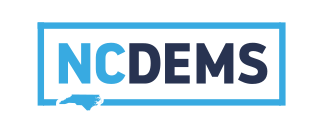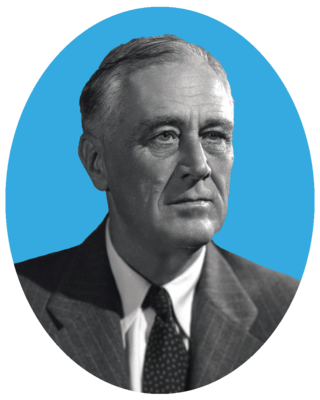
The 1978 United States Senate elections were held on November 7, in the middle of Democratic President Jimmy Carter's term. The 33 seats of Class 2 were contested in regular elections. Special elections were also held to fill vacancies.

The 1956 United States Senate elections were elections for the United States Senate that coincided with the re-election of President Dwight D. Eisenhower. The 32 seats of Class 3 were contested in regular elections, and three special elections were held to fill vacancies. Although Democrats gained two seats in regular elections, the Republicans gained two seats in special elections, leaving the party balance of the chamber unchanged.

The 1954 United States Senate elections was a midterm election in the first term of Dwight D. Eisenhower's presidency. The 32 Senate seats of Class 2 were contested in regular elections, and six special elections were held to fill vacancies. Eisenhower's Republican party lost a net of two seats to the Democratic opposition. This small change was just enough to give Democrats control of the chamber with the help of the Independent who at the start of this Congress in January 1955 agreed to caucus with them; he later officially joined the party in April 1955.

The 1948 United States Senate elections were held concurrently with the election of Democratic President Harry S. Truman for a full term. The 32 seats of Class 2 were contested in regular elections, and one special election was held to fill a vacancy. Truman campaigned against an "obstructionist" Congress that had blocked many of his initiatives, and additionally, the U.S. economy recovered from the postwar recession of 1946–1947 by election day. Thus, Truman was rewarded with a Democratic gain of nine seats in the Senate, enough to give them control of the chamber. This was the last time until 2020 that Democrats flipped a chamber of Congress in a presidential election cycle.

The North Carolina Democratic Party (NCDP) is the North Carolina affiliate of the Democratic Party. It is headquartered in the historic Goodwin House, located in Raleigh.

The 1944 Democratic National Convention was held at the Chicago Stadium in Chicago, Illinois from July 19 to July 21, 1944. The convention resulted in the nomination of President Franklin D. Roosevelt for an unprecedented fourth term. Senator Harry S. Truman of Missouri was nominated for vice president. Including Roosevelt's nomination for the vice-presidency in 1920, it was the fifth time Roosevelt had been nominated on a national ticket. The keynote address was given by Governor Robert S. Kerr of Oklahoma, in which he "gave tribute to Roosevelt's war leadership and New Deal policies."

The North Carolina United States Senate election of 1978 was held on November 7, 1978 as part of the nationwide elections to the Senate. The general election was between the Republican incumbent Jesse Helms and the Democratic nominee John Ingram. Helms won re-election, by a slightly wider margin than in 1972. This was the first Senate election where Republicans were re-elected.

The 2008 North Carolina lieutenant gubernatorial election was held on November 4, 2008, as part of the elections to the Council of State. North Carolina also held a gubernatorial election on the same day, but the offices of governor and lieutenant governor are elected independently.

The 1968 North Carolina gubernatorial election was held on November 5, 1968. Democratic nominee Robert W. Scott defeated Republican nominee Jim Gardner with 52.70% of the vote.

The 1920 North Carolina gubernatorial election was held on November 2, 1920. Democratic nominee Cameron A. Morrison defeated Republican nominee John J. Parker with 57.2% of the vote. Both were attorneys in private practice at the time.

The 1904 North Carolina gubernatorial election was held on November 8, 1904. Democratic nominee Robert Broadnax Glenn defeated Republican nominee Charles Joseph Harris with 61.72% of the vote. At the time, Glenn was an attorney and former member of the state Senate, while Harris was a businessman and former member of the United States Industrial Commission.

The 1896 North Carolina gubernatorial election was held on November 3, 1896. Republican nominee Daniel Lindsay Russell defeated Democratic nominee Cyrus B. Watson with 46.52% of the vote. This was the only election in North Carolina between 1872 and 1972 in which the Republican nominee won the governor's office, and the only one until 2016 in which no candidate received over 50% of the vote.

The 1888 North Carolina gubernatorial election was held on November 6, 1888. Democratic nominee Daniel Gould Fowle defeated Republican nominee Oliver H. Dockery with 51.97% of the vote.

The 1946 Texas gubernatorial election was held on November 5, 1946.

Elections were held in Illinois on Tuesday, November 5, 1940.

Elections were held in Illinois on Tuesday, November 3, 1936.

The 1988 North Carolina lieutenant gubernatorial election was held on November 8, 1988. Republican nominee Jim Gardner defeated Democratic nominee Tony Rand with 50.64% of the vote, becoming the first Republican elected lieutenant governor of North Carolina in the twentieth century.

The 1984 North Carolina lieutenant gubernatorial election was held on November 6, 1984. Democratic nominee Robert B. Jordan defeated Republican nominee John H. Carrington with 53.70% of the vote.

The 1952 North Carolina lieutenant gubernatorial election was held on November 4, 1952. Democratic nominee Luther H. Hodges defeated Republican nominee Warren H. Pritchard with 67.67% of the vote.

The 1936 North Carolina lieutenant gubernatorial election was held on November 3, 1936. Democratic nominee Wilkins P. Horton defeated Republican nominee J. Samuel White with 70.14% of the vote.













